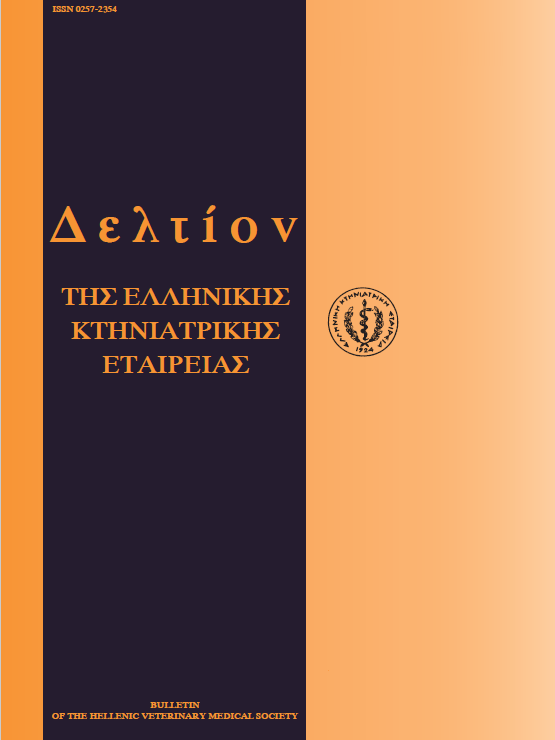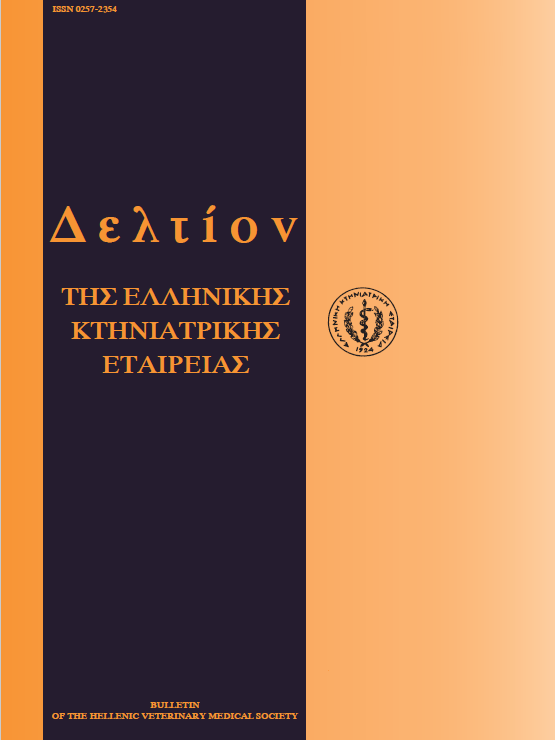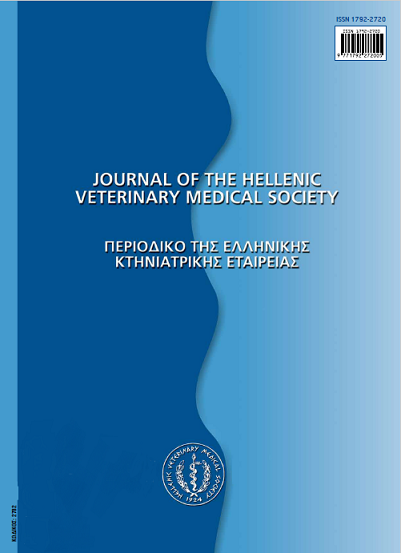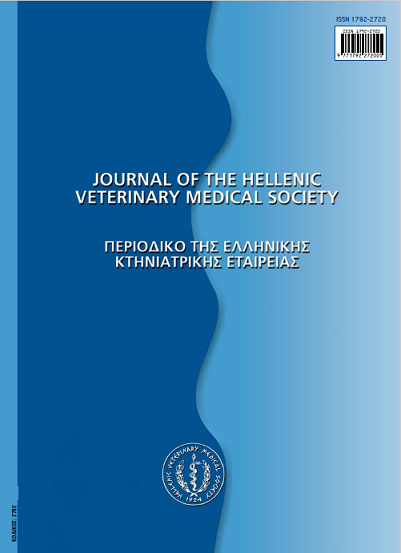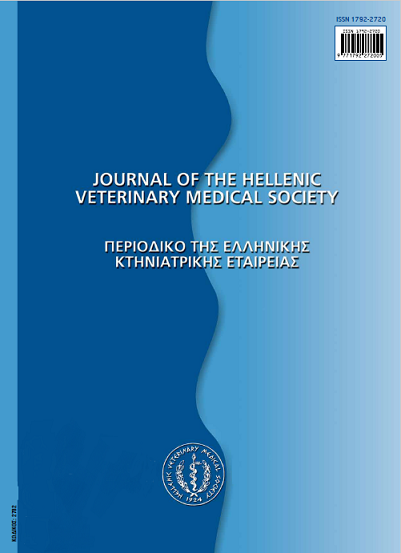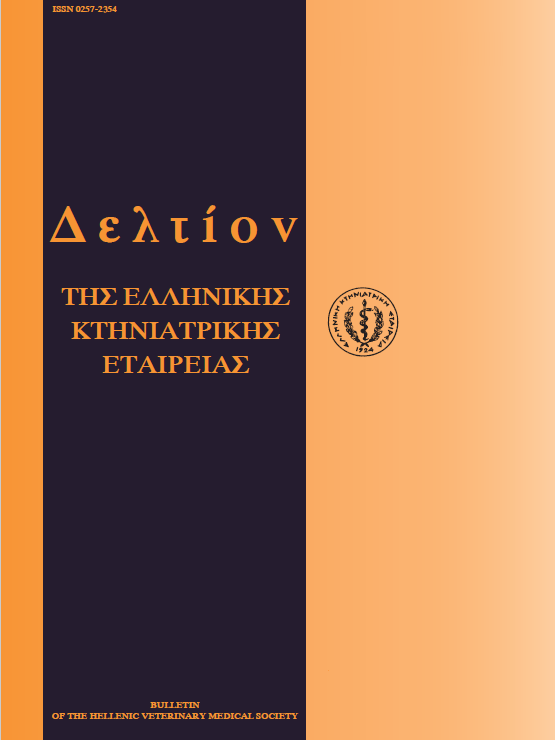Canine atopic dermatitis (atopy)
Abstract
Canine atopic dermatitis is a common clinical entity, characterized by pruritus due to sensitization against common enviromental allergens. It has been proven that there is strong breed predisposition. Genetically programmed dogs overproduct reaginic antibodies (IgE and/or IgGd) after their exposure to airborne allergens (dust mites, epithelia, pollens and molds) which consequently fix themselves to the mast cells of the skin. After reexposure to the same allergens these cells degranulate, with subsequent release of many pharmacologically active substances (histamine, leucotrienes, Prostaglandines etc). However, this is a rather simplistic explanation; the true pathogenesis of atopy is more complicated and still not well understood. Clinical signs first appear between 6 months and 3 years of age. Pruritus, the mainstay of atopy, can be seasonal or perennial. Skin lesions, appearing in later, are attributed to pruritus and/or to secondary complications (staphylococcal pyoderma, seborrhea, dry skin, Malassezia dermatitis). The diagnosis, based on history and clinical findings, necessitates exclusion of other pruritic skin diseases and identification of the offending allergens by using the intradermal test and/or serology (ELISA, RAST). The latter method is diagnostically inferior to intradermal skin test due to the high rate of false positive reactions. Therapeutic options include avoidance of the allergens responsible for sensitization, systemic therapy with glucocorticoids, antihistamines and essential fatty acids in various combinations, topical antipruritic therapy, hyposensitization which is the best therapeutical modality for the perennial form of the disease and management of secondary complications as well as of other concurrent allergic skin diseases, such as food and flea allergy.
Article Details
- How to Cite
-
SARIDOMICHELAKIS (Μ. Ν. ΣΑΡΙΔΟΜΙΧΕΛΑΚΗΣ) M. N., & KOUTINAS (Α.Φ. ΚΟΥΤΙΝΑΣ) A. F. (2018). Canine atopic dermatitis (atopy). Journal of the Hellenic Veterinary Medical Society, 49(1), 16–28. https://doi.org/10.12681/jhvms.15734
- Issue
- Vol. 49 No. 1 (1998)
- Section
- Review Articles

This work is licensed under a Creative Commons Attribution-NonCommercial 4.0 International License.
Authors who publish with this journal agree to the following terms:
· Authors retain copyright and grant the journal right of first publication with the work simultaneously licensed under a Creative Commons Attribution Non-Commercial License that allows others to share the work with an acknowledgement of the work's authorship and initial publication in this journal.
· Authors are able to enter into separate, additional contractual arrangements for the non-exclusive distribution of the journal's published version of the work (e.g. post it to an institutional repository or publish it in a book), with an acknowledgement of its initial publication in this journal.
· Authors are permitted and encouraged to post their work online (preferably in institutional repositories or on their website) prior to and during the submission process, as it can lead to productive exchanges, as well as earlier and greater citation of published work.

